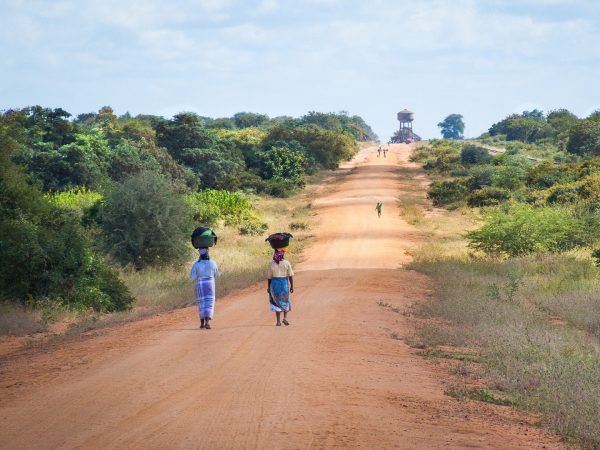Three speakers analyzed the Community of Sant’Egidio, a Rome-based Catholic organization, and its approach to battling acquired immunodeficiency syndrome (AIDS) in Africa at a March 25 event.
Georgetown University’s Berkley Center for Religion, Peace and World Affairs (Berkley Center) hosted the event, which featured Roberto Morozzo Della Rocca, a professor of modern history at the University of Roma Tre; Katherine Marshall, a senior fellow at the Berkley Center; and Mario Marazziti, a former Italian parliamentarian and spokesperson for the Community of Sant’Egidio.
During the event, the three panelists discussed how the Community of Sant’Egidio changed the narrative for addressing AIDS in Africa, offering medical treatments rather than solely focusing on preventing the spread of AIDS.
Morozzo Della Rocca said prior to the Community’s work, charities and medical providers focused on preventing AIDS through providing condoms and propaganda campaigns because they considered available antiretroviral treatments too expensive.
“Prevention campaigns based on making people terrified of AIDS were considered the best way to counter the disease,” Morozzo Della Rocca said at the event. “However, they were quite totally ineffective.”
In response to these campaigns’ inefficacy, medical professionals at the Community of Sant’Egidio set up the Disease Relief through Excellent and Advanced Means (DREAM) program, which offered a joint prevention and therapeutic approach to treating AIDS, in Mozambique in 2002.
Morozzo Della Rocca said Sant’Egidio doctors saw the contrast between European countries, where patients received effective antiretroviral treatment, and African countries, where healthcare officials focused on prevention. In Europe, AIDS patients receiving the drugs were surviving and no longer contagious, while in Africa, death rates remained high.
“According to Sant’Egidio, it appeared obvious that saving people from AIDS meant giving the workers back to their countries,” Morozzo Della Rocca said. “The people who wanted prevention didn’t think of the people who died. Society needed workers, the therapies were a necessity.”
Marshall, who at the time was the World Bank officer responsible for funding Sant’Egidio’s mission, said that the Community’s determination to convince investors that AIDS in Africa was a significant global health crisis allowed for an effective start to the program.
“What the Community did was argue forcefully that the people in Mozambique had a right to the same quality of care as the people in Italy,” Marshall said at the event. “They were determined to demonstrate that it was as feasible to have a quality program with quality results in Mozambique as it was in Rome.”

Now, the DREAM program works to create sustainable AIDS prevention, diagnosis, and treatment in African countries while also providing enhanced medical training and technology to local communities and healthcare facilities. Since 2002, it has expanded to 10 countries, treated 8 million people and trained 15,000 healthcare volunteers, according to Morozzo Della Rocca.
According to Marazziti, one of the most important roles of the DREAM program lies in uplifting and empowering African women.
“The crucial thing is that those who were marginalized and stigmatized — the women — have become the center of the program,” Marazziti said at the event. “They have become the backbone of the therapy, they have become a sort of beginning of new democracy in a country where women were worth less than one sandal.”
Marshall said Sant’Egidio’s response to AIDS in war-torn African countries has created greater awareness of the relationship between conflict and public health.
“In the same way that we’re now recognizing that climate and health cannot be disentangled, one of the lessons from Sant’Egidio is the degree to which the patterns of conflict and the response to health and services cannot be disentangled and need to be treated as part of the same,” Marshall said.
Morozzo Della Rocca said Sant’Egidio’s work aims to move beyond AIDS therapies to rebuilding communities affected by AIDS.“We demonstrated that the therapy is possible,” Morozzo Della Rocca said. “Now we have to demonstrate that, by treating AIDS, we can create a future for that country.”








